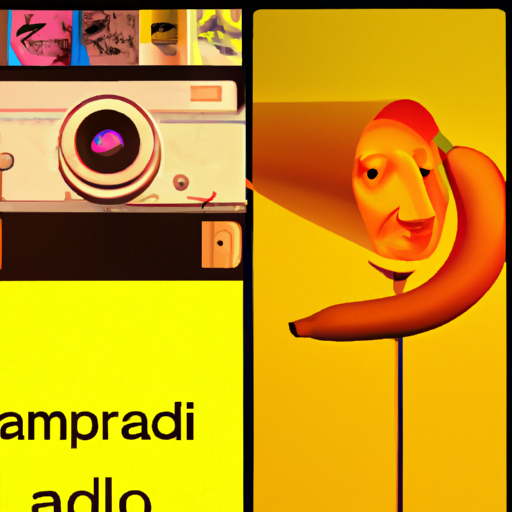
-
Table of Contents
Dadaism and Design: Embracing the Absurd and Nonsensical

Dadaism, an avant-garde art movement that emerged in the early 20th century, sought to challenge traditional artistic norms and embrace the absurd and nonsensical. While primarily associated with visual arts, Dadaism also had a significant impact on design, influencing various fields such as graphic design, typography, and even architecture. This article explores the relationship between Dadaism and design, highlighting how the movement’s principles and techniques continue to shape contemporary design practices.
The Origins of Dadaism
Dadaism originated during World War I in Zurich, Switzerland, as a response to the horrors and absurdity of war. Artists and intellectuals, disillusioned by the senseless violence and destruction, sought to create a new artistic movement that rejected traditional aesthetics and embraced chaos and irrationality. The term “Dada” itself is believed to have been chosen randomly from a French-German dictionary, emphasizing the movement’s rejection of logic and reason.
The Principles of Dadaism
Dadaism was characterized by several key principles that set it apart from other art movements of the time:
- Anti-Art: Dadaists rejected the notion of art as a precious commodity or a means of aesthetic pleasure. They sought to dismantle traditional artistic conventions and challenge the very definition of art itself.
- Collage and Assemblage: Dadaists often used collage and assemblage techniques to create their artworks. By combining disparate elements and found objects, they aimed to disrupt traditional visual narratives and create new meanings.
- Chance and Randomness: Dadaists embraced chance and randomness as creative tools. They incorporated elements of spontaneity and accident into their works, allowing the unexpected to shape the artistic process.
- Provocation and Shock: Dadaists sought to provoke and shock their audiences. They used satire, irony, and absurdity to challenge societal norms and expose the contradictions and absurdities of the world.
Dadaism’s Influence on Design
While Dadaism was primarily an art movement, its principles and techniques had a profound impact on the field of design. Designers began to incorporate Dadaist ideas into their work, challenging traditional design norms and embracing the absurd and nonsensical. Here are some areas where Dadaism influenced design:
Graphic Design
Dadaism revolutionized graphic design by introducing new approaches to layout, typography, and visual communication. Dadaist graphic designers experimented with unconventional typefaces, fragmented layouts, and unexpected juxtapositions of images and text. They aimed to disrupt traditional design conventions and create visual impact through the unexpected and absurd.
One notable example is the work of John Heartfield, a German Dadaist artist and graphic designer. Heartfield’s photomontages, which combined photographs, typography, and political satire, challenged the propaganda of the Nazi regime in the 1930s. His innovative use of visual elements and subversive messaging continues to inspire contemporary graphic designers.
Typography
Dadaism also had a significant influence on typography. Dadaist typographers experimented with unconventional letterforms, distorted typefaces, and nonsensical arrangements of text. They aimed to break free from the constraints of legibility and traditional typographic rules, embracing the visual impact of absurd and fragmented letterforms.
One notable example is the work of Kurt Schwitters, a German Dadaist artist known for his typographic experiments. Schwitters created collages using torn and fragmented pieces of text, blurring the boundaries between visual art and typography. His innovative typographic compositions continue to inspire contemporary typographers and designers.
Architecture
Dadaism’s influence extended to the field of architecture, challenging traditional notions of form and function. Dadaist architects sought to create unconventional and absurd structures that defied traditional architectural principles. They embraced the use of unconventional materials, unexpected shapes, and nonsensical spatial arrangements.
One notable example is the work of Frederick Kiesler, an Austrian-American architect and artist associated with the Dada movement. Kiesler’s Endless House, a visionary architectural project, rejected the idea of a fixed and static dwelling. Instead, it proposed a flexible and organic living space that could adapt to the changing needs and desires of its inhabitants. While the Endless House was never realized, its ideas continue to influence contemporary architectural thinking.
The Relevance of Dadaism in Contemporary Design
Although Dadaism emerged over a century ago, its principles and techniques continue to shape contemporary design practices. Designers today still draw inspiration from Dadaist ideas to challenge conventions, provoke thought, and create visually impactful designs. Here are some ways in which Dadaism remains relevant in contemporary design:
- Breaking Conventions: Dadaism encourages designers to break free from established design norms and explore new possibilities. By embracing the absurd and nonsensical, designers can challenge preconceived notions and create innovative and thought-provoking designs.
- Embracing Experimentation: Dadaism celebrates experimentation and encourages designers to embrace chance and randomness in their creative process. By allowing unexpected elements to shape their designs, designers can discover new and unexpected solutions.
- Subverting Expectations: Dadaism teaches designers to question and subvert expectations. By challenging traditional design conventions and creating unexpected juxtapositions, designers can create designs that surprise and engage their audiences.
Conclusion
Dadaism, with its embrace of the absurd and nonsensical, had a profound impact on the field of design. Its principles and techniques continue to inspire designers to challenge conventions, provoke thought, and create visually impactful designs. From graphic design to typography and architecture, Dadaism’s influence can be seen in various design disciplines. By embracing the spirit of Dadaism, designers can push the boundaries of creativity and create designs that defy expectations.
